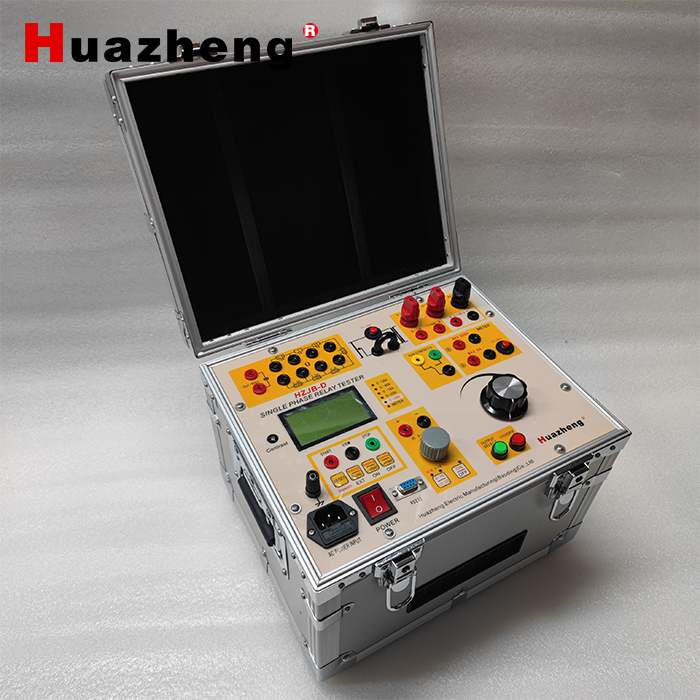![]() Email:sales04@bdhuazheng.com
Email:sales04@bdhuazheng.com
![]() Cellphone/ wechat/Whatsapp /Skype: +86 18330222302
Cellphone/ wechat/Whatsapp /Skype: +86 18330222302
During the use of relay protection testers, various incorrect uses may occur due to non-standard operation, improper parameter settings, or neglect of safety requirements. This not only affects the accuracy of test results, but may also damage equipment or cause safety hazards, as follows:
1. Improper wiring operation
Blindly wiring without verifying the polarity and wiring method of the device, such as reversing the output terminal of the tester with the tripping circuit and closing circuit of the relay protection device, can result in the inability to transmit test signals properly and even trigger device misoperation. Some users did not tighten the terminal screws when wiring, or used wires that did not meet specifications, resulting in poor contact, signal attenuation, and data fluctuations or interruptions during testing. Some even neglect the grounding requirements and fail to reliably connect the grounding terminal of the tester to the grounding system of the protective device, which not only affects the testing accuracy but may also cause equipment failure due to static electricity or leakage.
2. Unreasonable parameter settings
Failure to match test parameters based on the model and type of the tested relay protection device (such as overcurrent protection, differential protection), such as arbitrarily setting current/voltage amplitude, action time limit, phase angle, etc., resulted in test scenarios that did not match actual operating conditions, making it impossible to truly verify device performance. Some users have not correctly set the fault type (such as single-phase ground, three-phase short circuit), fault transition resistance, or fault removal time when simulating complex faults, resulting in test results losing reference value. In addition, ignoring the output capacity limitation of the tester and setting the output current/voltage beyond the rated range of the equipment can accelerate the aging of internal components of the instrument in the long run, and in severe cases, cause overload damage.
3. Inadequate safety operations
Failure to check the insulation status of the testing instrument and the tested device before testing can lead to electric shock or short circuit accidents if the equipment insulation is damaged or damp during power on testing. Some users randomly plug and unplug wiring terminals or touch live parts of the instrument during the testing process, violating the basic operating norms of "power off first, wiring later". At the same time, ignoring the requirements of the testing environment and using equipment in high temperature, humidity, excessive dust, or strong electromagnetic interference scenarios not only affects the stability of the testing, but may also cause instrument failure due to environmental factors.
4. Testing process and maintenance deficiencies
Skipping the equipment preheating stage and directly starting the test, the internal electronic components of the instrument did not reach a stable working state, resulting in a significant deviation in the initial test data. Failure to shut down the equipment according to regulations after testing and directly cutting off the power may result in data loss or program disorder within the instrument. Failure to perform regular maintenance after long-term use, such as uncleaned terminal contacts, uncalibrated current/voltage output accuracy, and unchecked cooling systems, has resulted in decreased instrument performance, increasing testing errors, and even malfunctions that prevent normal operation.
5. Neglecting device status and compatibility
Before testing, the relay protection device was not confirmed to be in the correct test state, such as not exiting the trip outlet pressure plate or not switching to the "test" mode, which resulted in the actual tripping or closing of the device during the testing process, causing risks to the operation of the power grid. Some users did not configure the corresponding communication protocol (such as IEC61850) or set the communication parameters correctly when testing the intelligent protection device, resulting in the inability of the tester and the tested device to communicate normally and complete the digital protection function test. In addition, mixing different brands and specifications of test accessories (such as test lines and load resistors) can also affect the stability and accuracy of the test signal.


